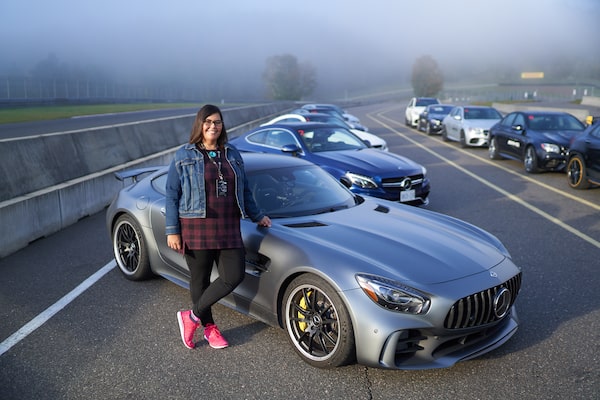
Dr. Marcia Anderson.Glen Reichwein
Marcia Anderson, 40, is a medical officer with the Winnipeg Regional Health Authority and executive director of Indigenous Academic Affairs in the Ongomiizwin Indigenous Institute of Health and Healing at the University of Manitoba.
I wanted to be a doctor since I was four years old. I was the first person in my family to go to university. I had to do a lot of the prep work myself like making sure I knew what courses to take in high school, knowing when application deadlines were due for university, figuring out how to apply for scholarships.
Medical school is just hard. It’s a tremendous work load and really long hours especially when you hit the clinical years. As an Indigenous woman, there were not a lot of Indigenous people in my class so that part was very isolating.
In medical school, I experienced a lot of racism, for the first time. At first, it was more about how Indigenous people were talked about, always in the deficits – higher rates of diabetes, higher rates of alcoholism, higher rates of suicide – always very negative and never contextualized.
I was on my obstetrics rotation as a medical student in a room with a senior resident, a couple of junior residents, and one other medical student. The senior resident, who holds a lot of power on the ward, said the best thing for Canada would be if native people stopped reproducing. We’re on an obstetrics floor where a majority of the patients are Indigenous and I’m an Indigenous woman! That was one example of racism.
I really had to go through a process of reclaiming my own identity. The choice was believe everything I’m hearing in medical school about me or put my own work into understanding who I am and forming connections. I was able to connect with several other Indigenous docs and medical students across the country and that became a really important support network. I began spending more time in the communities and I started to see a lot of the strengths of the communities. That helped me to buffer some of the very negative experiences.
The importance of family and connection – that grounding is critical. When I was a kid, I don’t think a single day went by that I didn’t hear I was loved. Not two or three days went by that I didn’t hear from my grandparents, parents or my aunties that they were proud of me. I always had a very strong family network of support and they believed in me.
When I think about my daughters, who are 8 and 4, who may or may not become physicians but will experience a professional world as Indigenous women, I don’t want them to go through the things I went through. It was really discouraging to hear that students now – 20 years later – are going through the same things I went through. We only have less than 20 years before my daughters get there.
We need to look beyond the stereotype. Stereotypes get in the way of seeing people’s humanity and it gets in the way of making space for people’s full expression of their rights. And we need to understand the ways in which as a society we’re still creating inequality and still creating unequal opportunities for Indigenous kids. Then, we need to make different policy choices so that truly our country provides equal opportunity for every child who is growing up here.
The best piece of advice I got was to own my space. Take up your space. You have to know who you are. You have to have an idea of where you want to go, but you have to believe you’re entitled to the space you’re in now and where you want to go. So take up that space and don’t make yourself small for everyone.
Stay ahead in your career. We have a weekly Careers newsletter to give you guidance and tips on career management, leadership, business education and more. Sign up today.